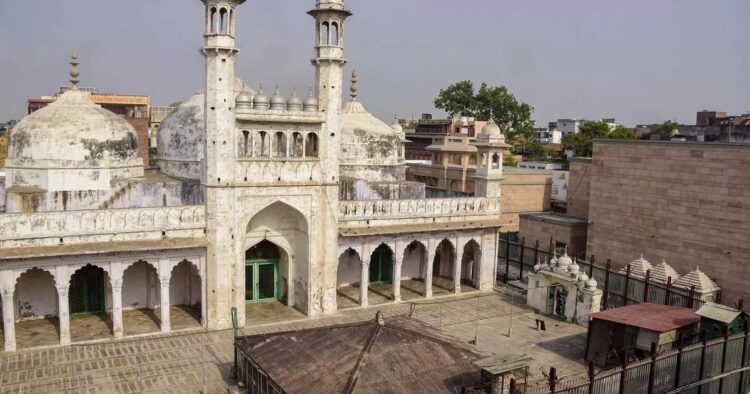In a significant development, the Varanasi district court has granted permission for Hindu devotees to offer prayers at ‘Vyas Ka Tekhana’ inside the Gyanvapi Mosque complex. This comes as a win for the Hindu side in an ongoing legal battle. The court has mandated the District Administration to make necessary arrangements within seven days, allowing the commencement of religious ceremonies. According to Advocate Vishnu Shankar Jain, representing the Hindu side, the decision emphasizes the right for everyone to perform Puja.
Earlier this week, the Hindu side had approached the Supreme Court seeking the de-sealing of the ‘wazukhana’ area within the mosque premises. This area, where Muslims perform ablution, was sealed by a Supreme Court order in 2022. The move followed findings by the Archaeological Survey of India (ASI) suggesting evidence of a pre-existing Hindu temple in the complex.
The ‘wazukhana’ area was sealed pending the ASI’s survey of the mosque premises. The recent application filed by the Hindu side aims to lift the stay order and allow the ASI to conduct further investigations in the ‘wazukhana’ area without causing any damage to the ‘Shivling’ believed to be present.
The ASI initiated the survey of the Gyanvapi mosque complex on August 4, 2023, after the Allahabad High Court dismissed a petition from Muslim litigants seeking a stay on the Varanasi court’s order for a scientific survey. Utilizing ground-penetrating radar and scientific instruments, the ASI explored the mosque premises, revealing significant details about the site.
On January 27, 2024, Advocate Vishnu Shankar Jain claimed that the ASI’s extensive 800-page report confirmed the destruction of a Hindu temple in the 17th century to build the Gyanvapi mosque. The report allegedly mentions discovering ancient scriptures in Kannada, Devanagari, and Telugu languages related to Rudra, Janardan, and Vishweshwar. Additionally, the report suggests that the pillars of the demolished temple were repurposed in the construction of the mosque.
The ASI report, submitted to the Varanasi court, concludes that a pre-existing Hindu temple was destroyed during the reign of Aurangzeb in the 17th century, and part of it was incorporated into the existing structure. The report emphasizes the existence of a large Hindu temple prior to the construction of the current mosque, further corroborating the claims made by the Hindu side. The dispute continues to be a focal point of historical and religious significance, with the latest court ruling allowing Hindu prayers marking a notable development in the ongoing legal proceedings.















Comments